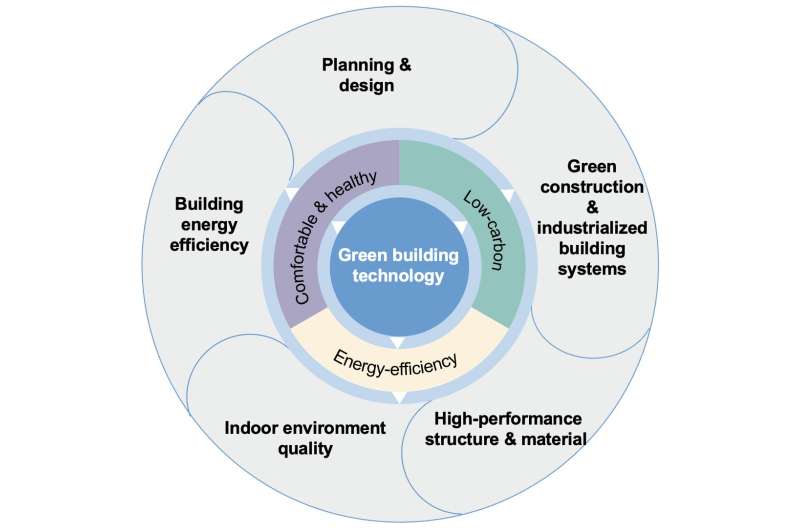Green building progress in the '13th Five-Year Plan' for China

Building construction and operation account for 16% and 22%, respectively, of total carbon emissions in China. Those numbers are down, but still need significant work to achieve green building construction and carbon neutrality, according to an editorial published on July 6 in Building Simulation.
"If the construction industry moves to a larger production system with a higher degree of standardization, modularity and off-site completion of the main building work—like manufacturing—then the industry could have much increase in productivity," said paper author Xue Liu, postdoctoral researcher in Tsinghua University's School of Architecture. "Promoting green buildings is proposed as an effective solution to the key problems of building industry development, including low labor productivity, high consumption of building materials, and high carbon dioxide emissions in construction and operation."
Across construction and operation, Liu said green building technologies aim to achieve improved planning and design; energy efficiency; indoor air quality; high-performance structures and material; and green construction and industrialized building systems.
The editorial summarizes the progress of such green building technology goals laid out in China's 13th Five-Year Plan, which closed in 2021. She also outlines focus areas for achieving carbon neutrality by 2060, a national goal prioritized in the 14th Five-Year Plan, which China launched in January.
"The building sector accounts for one of the largest contributors to energy consumption and carbon dioxide emissions in China," Liu said, noting that China has emphasized green building technologies in national policies since 2013 as an effective solution to key problems in the building industry. "Green buildings are environmentally responsible and resource-efficient throughout their lifecycle, from siting, design and construction to operation, maintenance, renovation and deconstruction."
The 13th Five-Year Plan detailed goals related to the research and development of energy efficiency technologies. During this period, several facilities were built as case studies of the advancing technologies, including the Beijing Daxing Airport, which opened in 2019 and was the first project in China to earn LEED for Cities Platinum Certification. While those projects that obtain China's green certification, called the Green Building Evaluation Label (GBEL), Liu said, are primarily located in developed districts.
"The expected goals of green building technologies in the 13th Five-Year Plan have been achieved in general," Liu said. "However, the projects with GBEL are mainly awarded for their building design. The number of certifications for building operation are far fewer."
"Our main goals of the 14th Five-Year Plan are to improve the quality of green building development; improve energy efficiency in new buildings; promote renewable energy applications; conduct building electrification programs; and promote innovative green construction technologies," Liu said. "Ultimately, we want to summarize the progress of the development of green building technologies in China and how it benefits society."
More information: Min Song et al, Building a greener future—Progress of the green building technology in the "13th Five-Year Plan" of China, Building Simulation (2022). DOI: 10.1007/s12273-022-0915-y

















